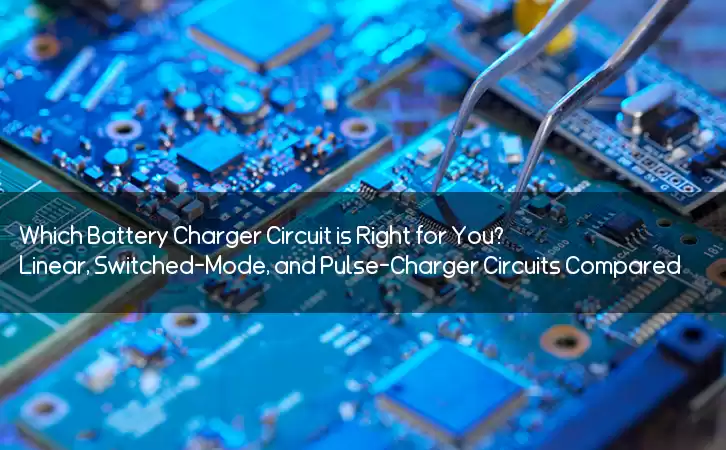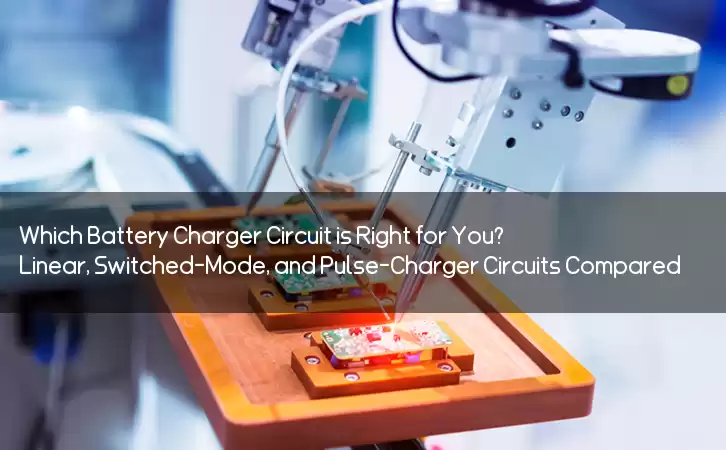Information Center
Which Battery Charger Circuit is Right for You? Linear, Switched-Mode, and Pulse-Charger Circuits Compared
Published:2023-07-17 20:33:31 Author:Green WCND Views:48Battery Charger Circuit: An Introduction

Battery chargers are devices used to recharge batteries and restore their power to the highest capacity. Battery chargers come in different types and sizes, but their primary function is to provide a specific current or voltage to recharge batteries. Battery chargers are used in various applications such as smartphones, laptops, power tools, electric vehicles, and renewable energy systems.

A battery charger circuit is an electronic device that regulates and controls the charging process of a battery. The circuit consists of different components such as resistors, capacitors, diodes, transistors, and integrated circuits. The battery charger circuit converts the electrical power supplied from a source into a form suitable for the battery being charged. Battery charger circuits are classified into three types: linear, switched-mode, and pulse-charger circuits.
Linear battery charger circuits are the simplest type of charger, with a low number of components. They operate by regulating the voltage at a constant rate, which means the charging current decreases as the battery approaches full charge. The linear charger circuit is less efficient than the other types of chargers, and it tends to generate more heat, which can affect the lifespan of the battery.
Switch-mode battery charger circuits are more complex than linear chargers and have a higher level of efficiency. They use a switching transistor to convert the power supplied from the source into a high-frequency pulse. The high-frequency pulse is then converted back into a DC voltage suitable for the battery. The switching transistor helps to eliminate the heat generated by the circuit, leading to longer battery lifespan.
Pulse-charger circuits involve a combination of both the linear and switched-mode charger circuits. They use a series of high-frequency pulses to charge the battery instead of a constant voltage or current. The pulsing action helps to reduce the heat generated by the circuit while providing a faster charging time. However, pulse-charger circuits require more complex control circuitry compared to the other two types.
In conclusion, selecting the right battery charger circuit depends on the application’s requirements and the type of battery being charged. Linear battery charger circuits are cost-effective but less efficient than switched-mode and pulse-charger circuits. However, switch-mode and pulse-charger circuits are more complex, with higher efficiency, and longer battery lifespans. The choice of the battery charger circuit depends on the type of battery, the charging rate, and the cost-effectiveness of the circuit.
Power Adapter Design and Customization Guide for Portable Electric KettlesI. Common Design Types for Portable Electric Kettle Power AdaptersPortable electric ke···
I. Common Design Types of Power Adapters External Independent Type (Most Common) Design: A standalone adapter (e.g., "black brick") connected to the p···
Handheld Vacuum Cleaner Power Adapter Selection GuideIntroductionHandheld vacuum cleaners have become a mainstream tool for household cleaning due to their port···
Drill Power Adapter Selection Guide.drill-container { font-family: Arial, sans-serif; line-height: 1.6; max-width: 800px; margin: 0 auto; padding: 20px; } .dril···





